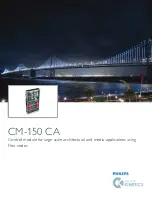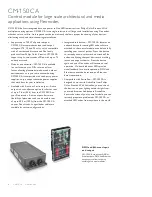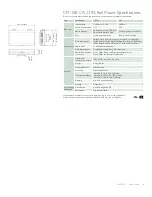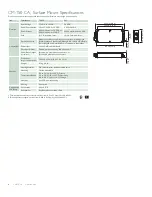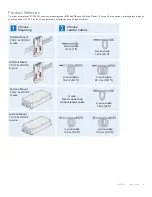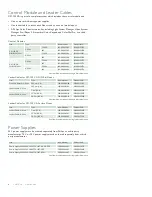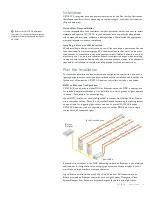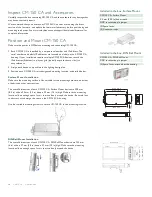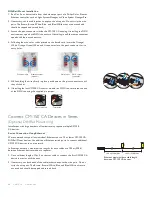
CM-150 CA Product Guide
7
Installation
CM-150 CA integrates data and power transmission for the Flex family of luminaires.
Installation specifics will vary depending on luminaire types, controller, environment
(dry or damp/wet).
Owner/User Responsibilities
It is the responsibility of the contractor, installer, purchaser, owner, and user to install,
maintain, and operate CM-150 CA in such a manner as to comply with all applicable
codes, state and local laws, ordinances, and regulations. Consult with the appropriate
electrical inspector to ensure compliance.
Installing in Damp or Wet Locations
When installing in damp or wet locations, seal all junction boxes, power supplies, and
other devices with electronics-grade RTV silicone sealant so that water or moisture
cannot enter or accumulate in any wiring compartments, cables, luminaires, or other
electrical parts. You must use suitable outdoor-rated junction boxes when installing
in wet or damp locations. Additionally, you must use gaskets, clamps, and other parts
required for installation to comply with all applicable local and national codes.
Plan the Installation
To streamline installation and ensure accurate configuration, start with a layout or a
lighting design plan that shows the physical layout of the installation and identifies the
locations of all luminaires, CM-150 CA devices, controllers, switches, and cables.
DMX or Ethernet Configuration
CM-150 CA can be used in either DMX or Ethernet networks. DMX is appropriate
for relatively simple installations, or for installations in which groups of lights operate
in unison—for example, for accent lighting.
Typical DMX installations with intelligent LED luminaires from Philips Color Kinetics
use a controller such as iPlayer 3, a Controller Keypad for turning the lighting system
on and off and for triggering light shows, and one or more CM-150 CA devices.
CM-150 CA devices can be connected in series to deliver DMX data from a single
controller to all connected lights.
iPlayer 3
Controller
CM-150 CA
iColor Flex LMX gen2
Because it is not subject to the DMX addressing limitations, Ethernet is the preferred
environment for large-scale, color-changing light shows and video displays, both of
which require large numbers of unique addresses.
Typical Ethernet installations with Philips Color Kinetics LED luminaires use an
Ethernet switch, an Ethernet controller such as Light System Manager or Video
System Manager Pro, Antumbra Ethernet Keypads for push-button light show
E
Refer to the CM-150 CA Installation
Instructions for specific warning and caution
statements at www.colorkinetics.com/ls/pds/
cm150ca/.

